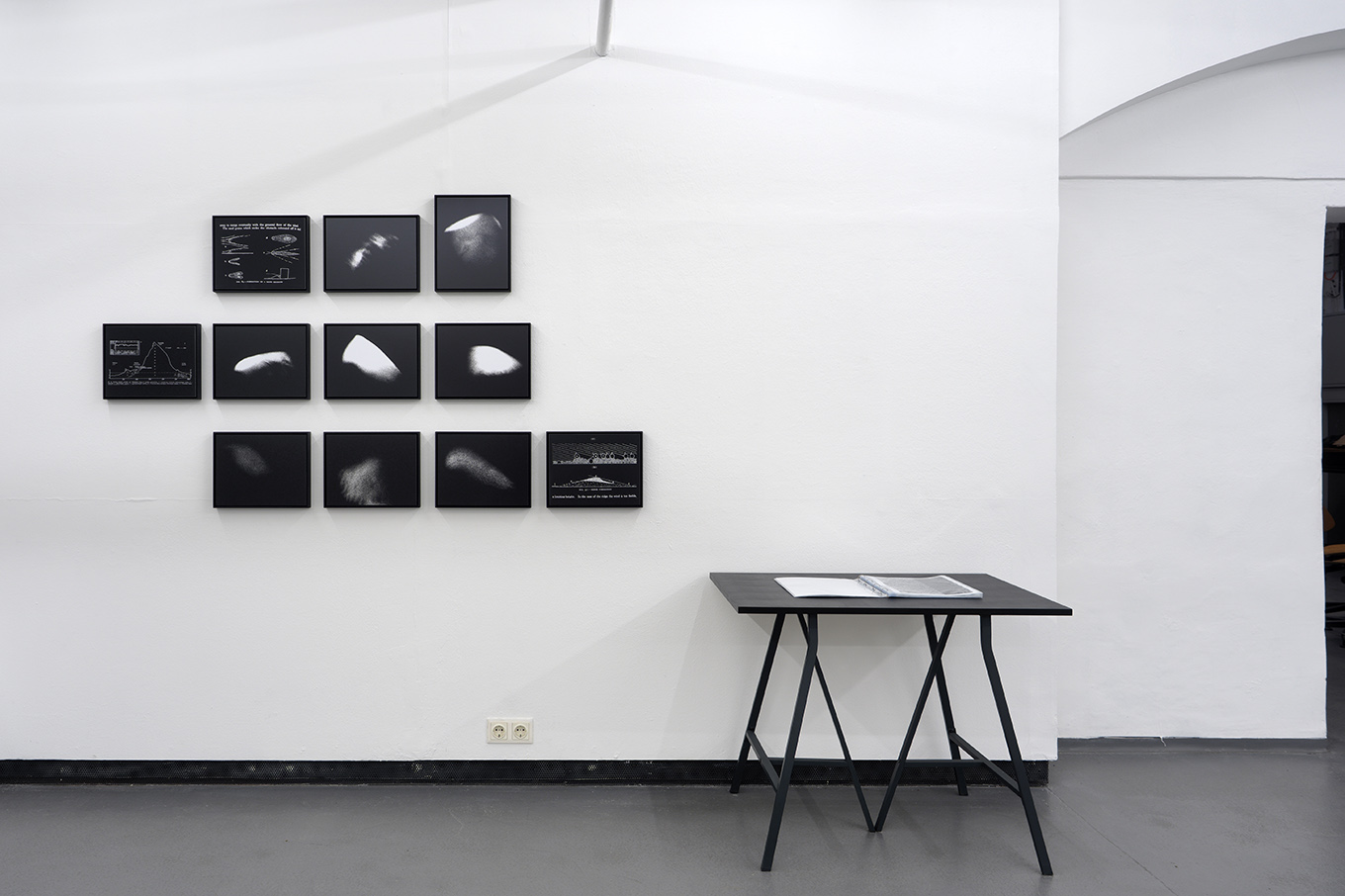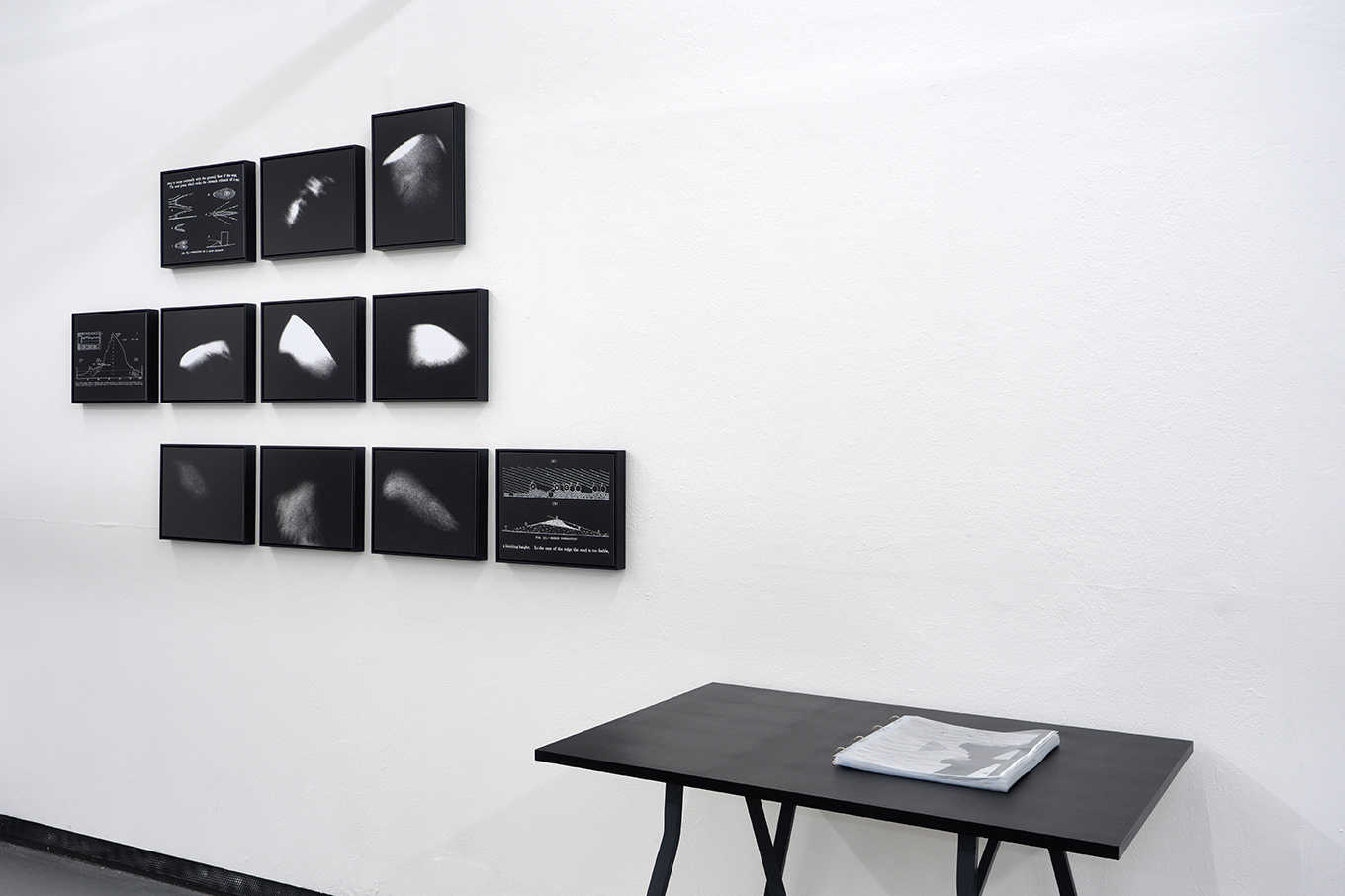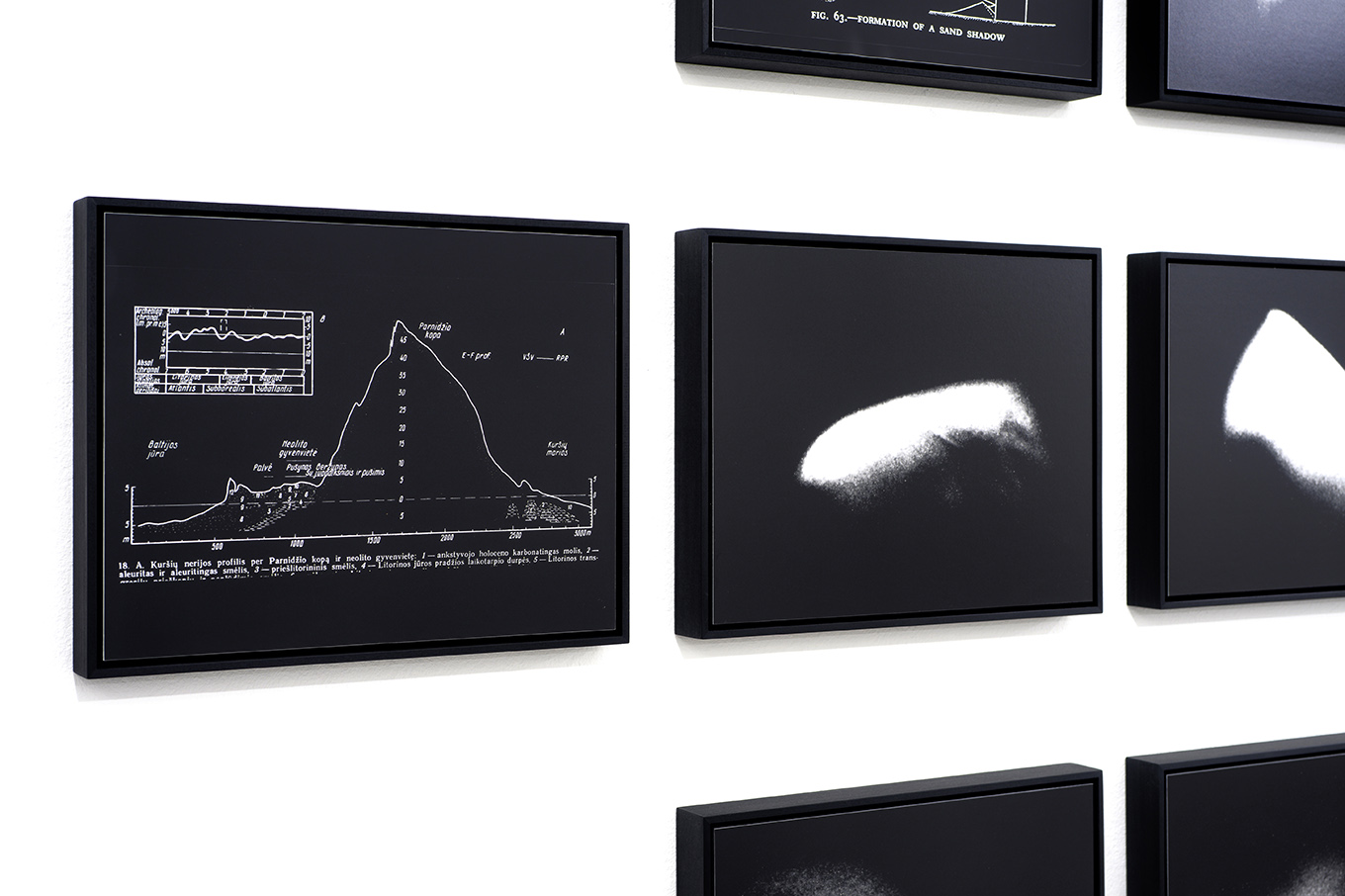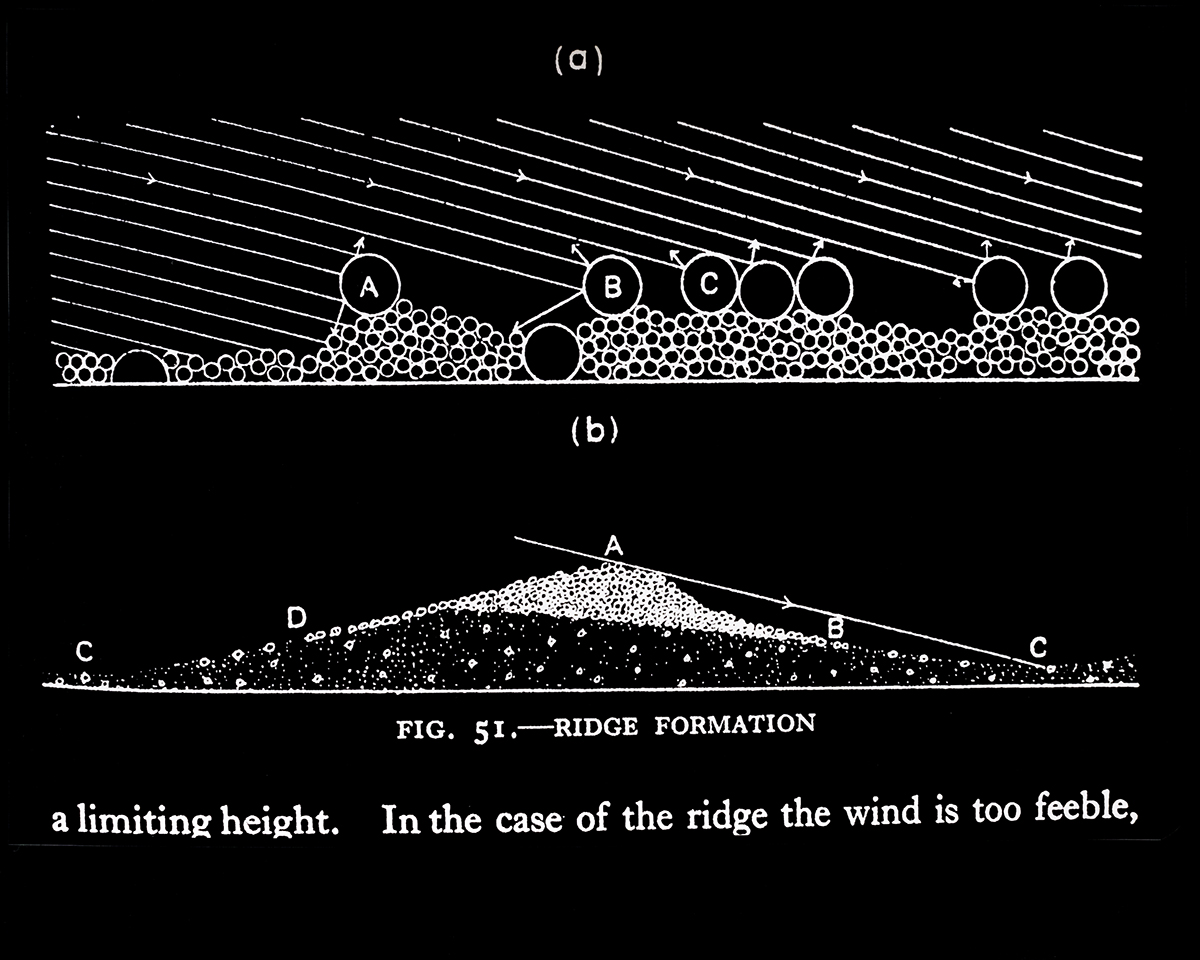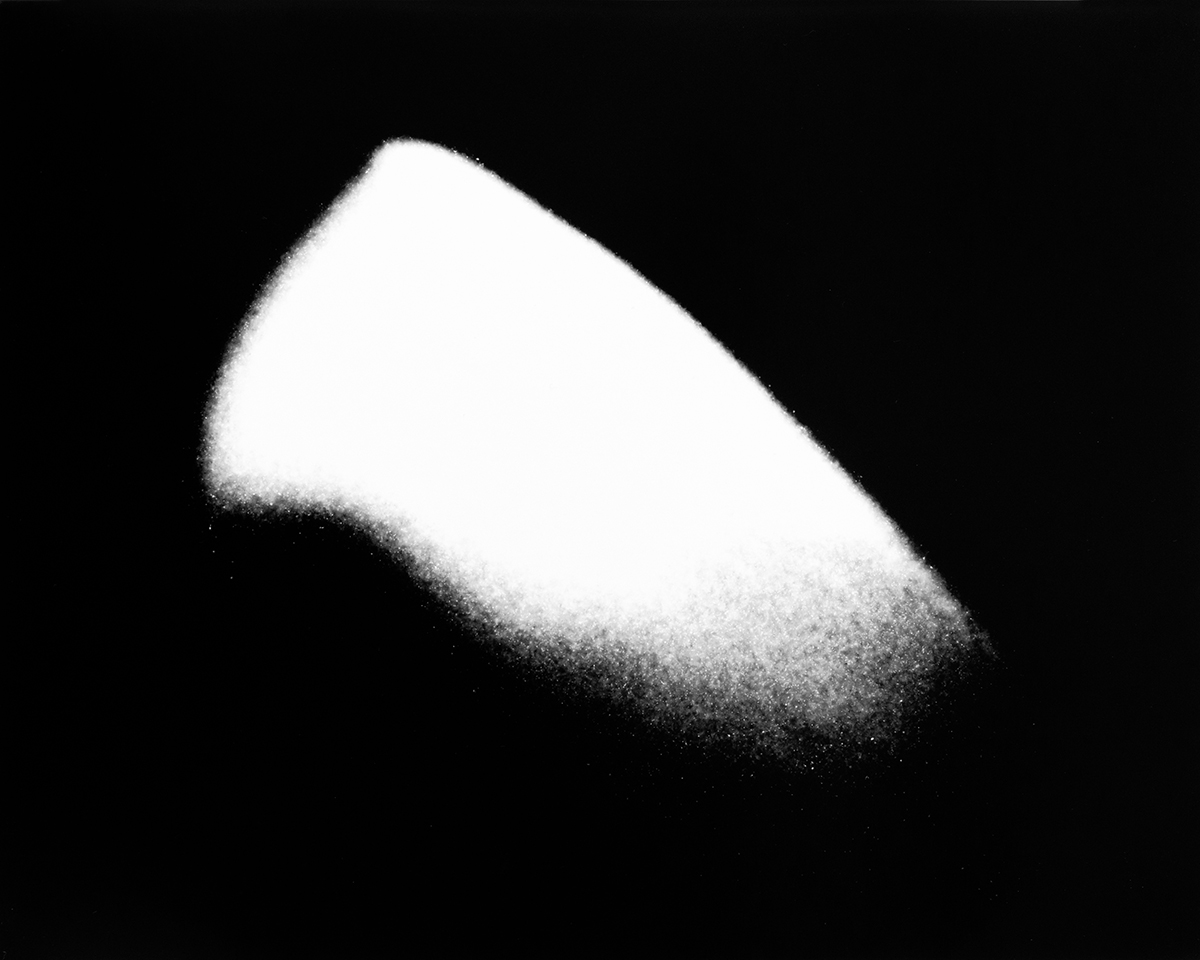DUNE RECONSTRUCTIONS & GRAIN PROVOCATION
In this project, the Parnidis Dune on the Curonian Spit in Lithuania was imagined as an image that was to be broken down into its individual parts by means of photography in order to create an analogy between the grain of sand as the basic component of the dune and the grain of silver as the basic component of the analogue photograph. In addition to graininess, the terms resolution (defining the accuracy with which a film can reproduce fine structures) and sensitivity are further keywords from photographic technology that were central to the development of the work. This strategy of approaching the given landscape through the filter of photographic questions, links site-specific and media-reflexive working approaches to explore both the site and the medium itself.
During repeated walks on the dune, 15 B/W films in all available sensitivities were exposed and developed, also by using the "push technique", in which the combination of underexposure and extended development time on the one hand increases the film sensitivity, but also enhances graininess.
The book installation GRAIN PROVOCATION, formally based on a working ring binder, documents this increase in graininess by means of macro photographs taken at a scale of 1:1 and enlarged again 10 times in print, underlined and counteracted by the co-depiction of a ruler. On the pictorial level, grain of sand and grain of silver - what is depicted and what produces the depiction - begin to overlap and grow together.
As a further intensification of the degree of abstraction, DUNE RECONSTRUCIONS, a series of sand photograms, follows on from the macro photographs. The series shows attempts in the darkroom to reconstruct elements from the visual formal language of the dune on the photographic paper itself. In comparison to the GRAIN PROVOCATIONS, the grain of sand is shown directly on the paper on a scale of 1:1. Graphic representations from scientific books that show the formation and movement of dunes were copied onto baryta paper in analogue form using hybrid reproduction techniques and, in interaction with the sand photograms, create a grey area between scientific and poetic-abstract representation.
